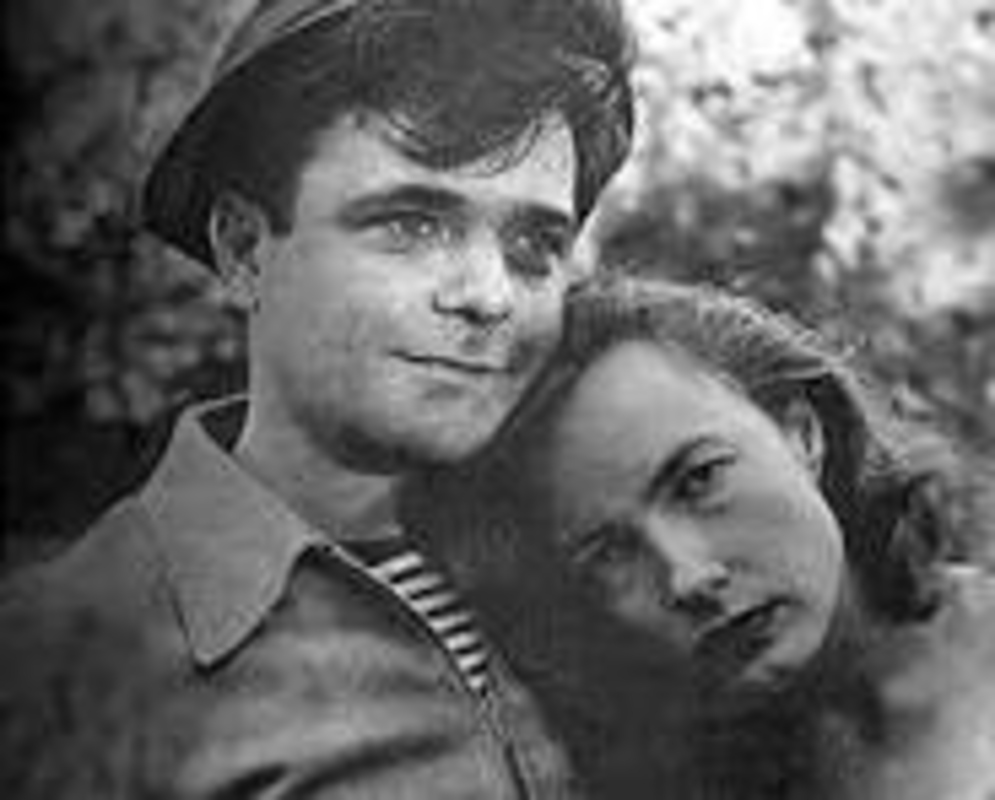
John Latouche Residence
overview
Lyricist John Latouche lived in an apartment in this Greenwich Village building from late 1939 to 1941, during the height of his early career, when he wrote the songs for his first Broadway musical, Cabin in the Sky, which featured the hit song “Taking a Chance on Love.”
While here he established the first of “Touche’s Salons,” famed gatherings of artists, writers, performers, musicians, and composers, with a decidedly LGBT vibe.
History
Little known today, John Treville Latouche (1914-1956) was considered an entertainment wunderkind when he lived in the five-room apartment on the lower floors of this converted row house from late 1939 to 1941.
Born in Baltimore and raised in Virginia, Latouche attended Columbia College for two years before dropping out in 1935 to pursue a career in show business. During the next few years he wrote songs for the lesbian cabaret performers Madame Spivy LeVoe and Hope Emerson. Early in 1938 he began working for the Federal Theater Project (FTP) as a performer and songwriter. Paul Robeson’s version of Latouche’s patriotic cantata “Ballad for Americans” gained enormous acclaim in November 1939, and the cantata remained popular into the early 1940s.
With this success, during the winter of 1939-40, Latouche moved to this building with a roommate, writer-editor Robert Faulkner, who Latouche’s biographer suggests was also his lover. Latouche was asked by his friend, composer Vernon Duke, to write the lyrics for the all-Black musical Cabin in the Sky, starring Ethel Waters. “Taking a Chance on Love” became a signature song for Waters, the most popular song Latouche ever wrote, and one of Duke’s greatest hits. The show garnered rave reviews, had a modest Broadway run, a very successful national tour, and in 1943 became an MGM musical starring Waters.
Following the opening of Cabin, Latouche worked on a number of other projects, including writing lyrics for the song “Day Dream,” which had been composed by Billy Strayhorn for the Duke Ellington band in 1939, and collaborating with Vernon Duke on two Broadway musicals, Banjo Eyes and The Lady Comes Across.
For Latouche, who had moved frequently during the 1930s, often bunking with friends or renting rooms in cheap hotels, this apartment offered his first opportunity to entertain on a large scale. Frequent LGBT guests included Paul and Jane Bowles, Virgil Thomson and his long-time companion, artist Maurice Grosser; writer Charles Henri Ford and his lover, artist Pavel Tchelitchew; composers Aaron Copland, Marc Blitzstein, and David Diamond; dance impresario Lincoln Kirstein; producer Chick Austin; writer-editor Leo Lerman; actors John Houseman, Marlene Dietrich, and Eleonora von Mendelssohn; photographers Carl Van Vechten and Rudy Burckhardt; painter Buffie Johnson; and performer Yul Brynner. Latouche also opened his doors to a younger, less established crowd that included Leonard Bernstein, Judy Holliday, Tennessee Williams, Oliver Smith, and Brion Gysin. Latouche was especially close to Ruth Landshoff-Yorck, a bisexual actor and writer, who had been a major figure in Berlin’s cultural scene during the 1920s and who became his secretary in 1940.
Although primarily homosexual, Latouche occasionally dated women and in October 1940 married Theodora (Teddy) Griffis, the bisexual daughter of wealthy financier Stanton Griffis. In October 1941, the Latouches moved to an apartment at 217 East 49th Street (demolished). (Faulkner had left in April 1940 to join the Bowleses on their travels in Mexico.) After serving in the Navy and separating from his wife, in September 1944 Latouche moved to an apartment at 29 Washington Square West where he resumed writing for Broadway. His post-war works included the books and lyrics for Beggar’s Holiday (1946), written in collaboration with Duke Ellington and Billy Strayhorn, the book and lyrics for the Golden Apple (1954, music by James Moross), which debuted at the Phoenix Theater and became the first Off-Broadway musical to win the New York Drama Critics Award, and the libretto for the opera The Ballad of Baby Doe (1956), written with composer Douglas Moore, which became one of the most famous American operas of the 20th century.
During the post-war years, Latouche had a number of romantic relationships with men, some of whom lived with him for long periods of time. They included composer-editor Donald Fuller, Frank Merlo (who left Latouche for Tennessee Williams), dancer Walter Stane, artist Harry Martin, and lyricist-poet Kenward Elmslie, with whom he had his most stable relationship from 1951 to 1956. He continued to move frequently and his salons remained legendary. Later residences included the Chelsea Hotel (1946-47) and apartments at 120 West 12th Street (1948-49), 49 Park Avenue (1949-50), 11 East 77th Street (1950-51), and 136 East 67th Street (1951-56, building demolished), and a summer home in Calais, Vermont, where he died of a heart attack in August 1956, at age 41.
Entry by Gale Harris, project consultant (December 2024).
NOTE: Names above in bold indicate LGBT people.
Building Information
- Architect or Builder: Not determined
- Year Built: c. 1847-48; converted to a two-family dwelling: 1924
Sources
Howard Pollack, The Ballad of John Latouche: An American Lyricist’s Life and Work (New York, NY: Oxford University Press, 2017).
Jimmy Ernst, A Not-so-Still Life: A Child of Europe’s Pre-World War II Art World and His Remarkable Homecoming in America (New York, NY: St. Martin’s Press, 1984).
Luther Davis and John Cleveland, “And You Know Who I Am,” Collier’s, October 19, 1940, 80.
Virginia Spencer Carr, Paul Bowles: A Life (New York, NY: Scribner, 2004).
Do you have more information about this site?
This project is enriched by your participation! Do you have your own images of this site? Or a story to share? Would you like to suggest a different historic site?



